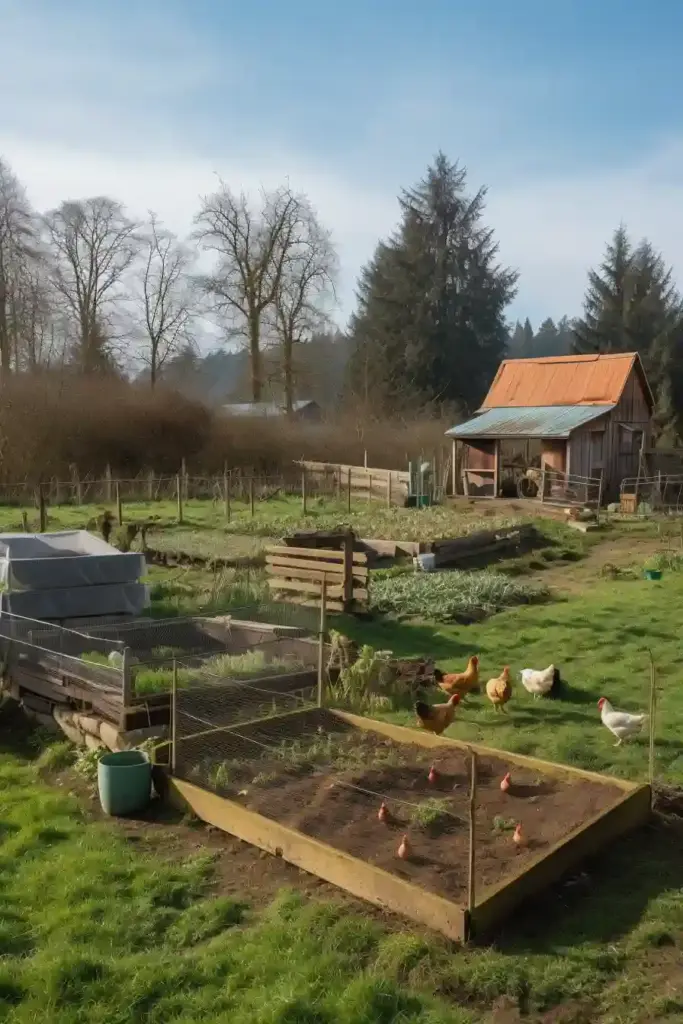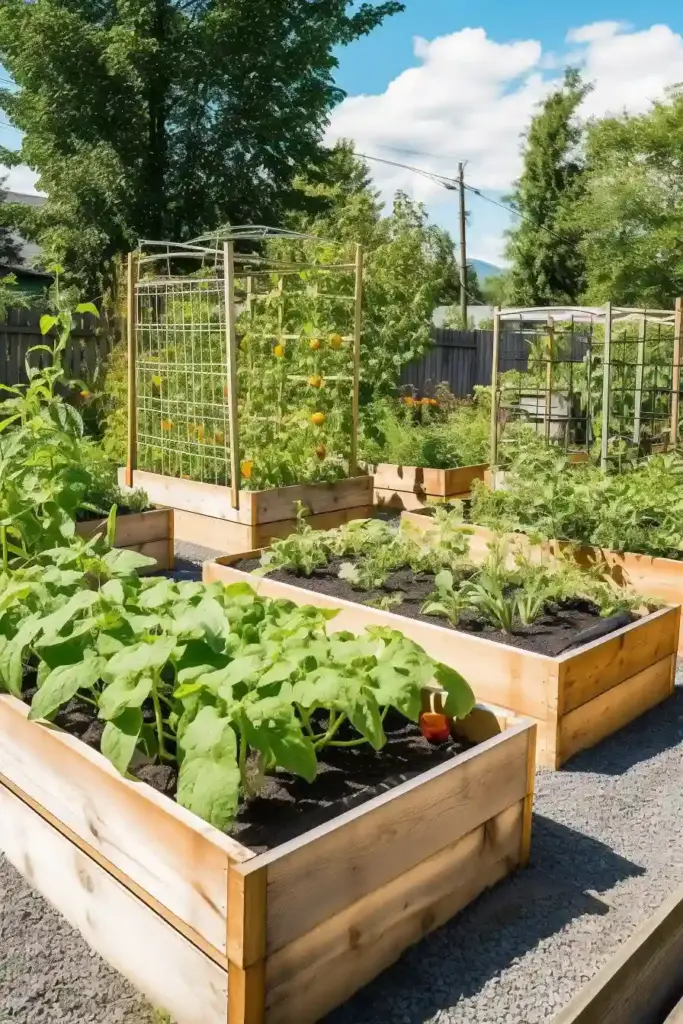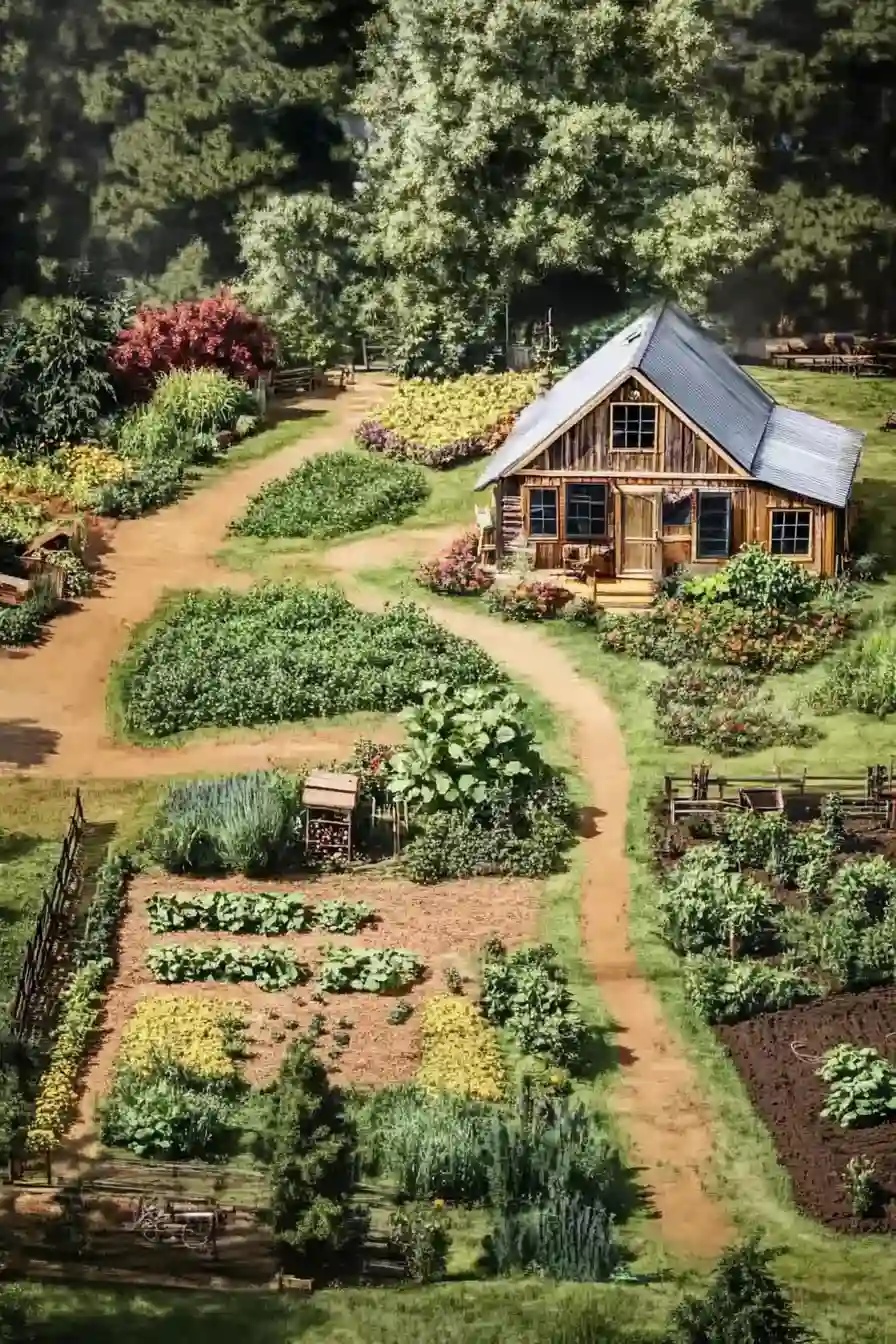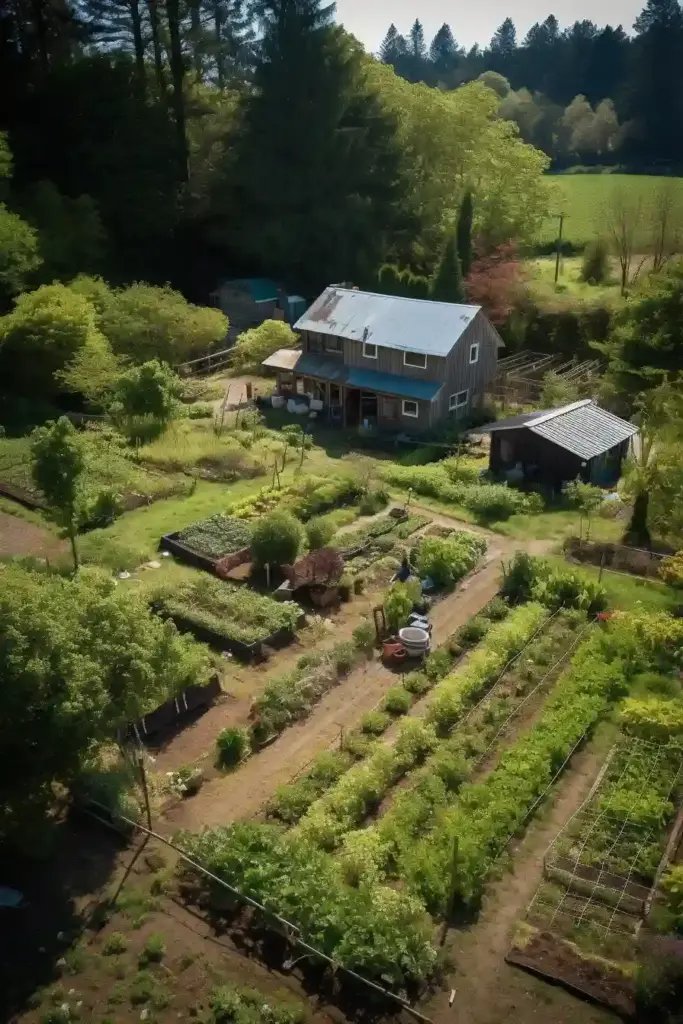Dreaming of a simpler, more sustainable life? Good news—you don’t need a massive farm to start homesteading. In fact, with smart planning, a one acre homestead layout can give you all the essentials to grow food, raise animals, harvest rainwater, and live closer to the land. Whether you’re starting from scratch or refining an existing plot, this guide will walk you through how to maximize every square foot of your one-acre dream.
From practical layouts to efficient systems and creative tips, we’ll explore how to transform a modest space into a thriving, productive homestead that supports your family and the planet. Ready to dig in? Let’s get started.
🌿 Is One Acre Enough to Homestead On?
Absolutely—one acre is more than enough to kickstart a successful homestead. While it might seem small at first glance, the key lies in how you design and utilize your space. With thoughtful planning, you can grow a wide range of vegetables, raise small livestock, install water systems, and even produce your own compost—all within a single acre.
Many modern homesteaders are proving that self-sufficiency doesn’t require vast landholdings. The average suburban backyard is less than half an acre, yet people are producing eggs, honey, herbs, and fresh produce right at home. On a full acre, you have the room to scale these systems up and introduce new elements like rotational grazing or permaculture zones.
Here’s what one productive acre can hold:
- A large vegetable garden (raised beds or in-ground)
- Fruit trees or a mini orchard
- Chicken coop and run
- Beehives
- Composting system
- Small animal pens (for rabbits or goats)
- A rainwater collection setup
- Tool storage and workstations
- A greenhouse or cold frame area
Even with space limitations, creative layout and vertical gardening techniques can help you do more with less. The trick is to prioritize your goals—whether it’s fresh produce, eggs, or simply a more sustainable lifestyle—and plan accordingly.
📐 Homestead Layout Inspiration: Smart Designs to Spark Your Planning
Before you grab a shovel, it helps to see how others have successfully laid out their one-acre homesteads. A solid one acre homestead layout balances growing space, livestock areas, water systems, and paths for easy movement. While each homestead is unique, there are tried-and-true design concepts that can guide you.
🧭 Common Elements in Productive One Acre Layouts:
- Zoning: Divide your land into functional zones—such as garden, livestock, composting, and storage—to stay organized.
- Central Access Paths: Keep walking distances short and efficient by designing paths that connect key zones without wasting space.
- Sunlight Awareness: Orient your garden and greenhouse areas to maximize sun exposure throughout the day.
- Windbreaks and Fencing: Strategic placement of trees, shrubs, or fencing can protect delicate crops and livestock from wind and predators.
- Vertical and Container Gardening: In tighter sections, go vertical—use trellises, stacked planters, or wall gardens to grow more without using extra land.
🌼 Visualize Before You Build
Tools like Google Earth, garden planning software, and even simple graph paper sketches can help you map out your land before you dig in. Here are some layout styles to consider:
- U-Shaped Layout: Livestock and compost in the back, gardens on the sides, and your home or storage area centered in front.
- Grid Layout: Divide the acre into equal sections—ideal for detailed crop rotation and rotational grazing.
- Permaculture Spiral or Zone Design: Start with high-use areas (like herbs and kitchen garden) closest to the home, radiating out to less frequently used zones.
💡 Pro Tip: Start small and leave room for expansion. A few well-planned garden beds and a small flock of chickens go a long way—and you can always add more over time.
✅ Pros and ❌ Cons of Homesteading on One Acre
While the idea of living off the land is inspiring, it’s important to understand both the benefits and limitations of working with just one acre. Here’s a breakdown to help you set realistic expectations as you plan your one acre homestead layout.

✅ Pros of Homesteading on One Acre
- Manageable Size
A single acre is easier to maintain than larger properties. You can stay on top of weeding, watering, and animal care without getting overwhelmed. - Lower Startup Costs
Less land means fewer upfront expenses. From fencing to soil amendments, your initial investments can stay within a budget. - Encourages Smart Planning
With limited space, you’re more likely to prioritize your true needs—resulting in a more efficient and focused homestead. - Close-Knit Systems
Everything is within reach. You’ll spend less time walking between zones and more time actually doing the work that matters. - Ideal for Suburban or Urban Homesteaders
A one-acre plot is often more accessible in suburban or edge-of-town locations, making it easier for newcomers to enter the homesteading lifestyle.
❌ Cons of Homesteading on One Acre
- Limited Space for Large Livestock
Animals like cows or pigs require more pasture and shelter. You’ll likely need to stick to smaller livestock like chickens, rabbits, or goats. - Tight Resource Management
Space constraints mean you’ll need to be strategic with water, feed storage, and composting—every square foot counts. - Less Room for Crop Diversity
While you can grow a variety of crops, you may not have the room to produce large quantities of everything, especially if you’re also keeping animals. - Risk of Overcrowding
Without proper planning, your acre can feel cluttered or become less productive due to poor layout decisions.
🌾 How to Become Self-Sufficient on One Acre

Self-sufficiency doesn’t mean doing everything at once—it means building systems that work together and serve your daily needs. On just one acre, it’s entirely possible to grow your own food, manage waste, raise small livestock, and support a sustainable lifestyle. Here’s how to make it happen.
1. 📝 Dream, Plan, and Prepare
Before planting or building anything, take time to dream big and plan smart. Think about:
- What foods you eat most often
- Whether you want animals (and which kinds)
- How you’ll handle water, waste, and storage
Use tools like free online garden planners or even a simple sketch to map your space. Prioritize flexibility—your layout should evolve as your needs grow.
2. 🐓 Raise Small Livestock
Focus on animals that thrive in smaller spaces:
- Chickens for eggs and pest control
- Rabbits for meat and manure
- Ducks for eggs and slug control
- Bees for pollination and honey
- Goats (miniature breeds) for milk and land clearing
💡 Tip: Use rotational grazing with portable fencing to reduce feed costs and keep your pasture healthy.
3. 🥕 Practice Intensive Organic Gardening
Maximize food production with:
- Raised beds or square-foot gardening
- Vertical setups for climbing crops like cucumbers and beans
- Succession planting to grow multiple crops per season
Grow high-yield, nutrient-dense staples like potatoes, leafy greens, carrots, and tomatoes. Use companion planting to naturally deter pests and boost productivity.
4. 💧 Install Rainwater Harvesting Systems
Collecting rainwater is a sustainable and cost-effective way to irrigate your homestead. Set up rain barrels under gutter downspouts and consider drip irrigation systems to minimize waste.
5. ♻️ Reuse Grey Water Where Possible
With a basic filtration setup, water from sinks, showers, and laundry can be repurposed for non-edible garden areas or trees. Always check local laws and safety guidelines before implementing grey water systems.
6. 🌱 Follow Permaculture Principles
Permaculture encourages you to work with nature, not against it. On a one-acre homestead, this means:
- Mulching to retain moisture
- Composting kitchen and yard waste
- Creating plant guilds (like fruit trees surrounded by beneficial plants)
Every element should serve multiple functions—saving time, money, and effort.
7. ♻️ Keep Everything (Well, Almost)
Homesteading thrives on resourcefulness. That old bucket? It’s a planter now. Leftover wood? Turn it into raised beds or a chicken perch. Jars, pallets, fencing scraps—these often become your most-used tools.
💬 Rule of thumb: If it’s sturdy and safe, don’t toss it. You’ll probably need it later.
8. 🐐 Pair Animals for Shared Space
You don’t need separate zones for every species. Some animals can cohabitate safely:
- Chickens and goats often share space well.
- Ducks and geese can use the same water zones.
- Rabbits and chickens can rotate within the same mobile tractor system.
Just make sure they have their own feed, shelter, and enough room to avoid stress.
9. 🌱 Use Self-Watering Seed Starters
Starting plants from seed saves money and increases crop variety. Create DIY self-watering containers using recycled plastic tubs or yogurt cups. Add drainage holes and a water reservoir to make germination foolproof—even if you forget to water for a day or two.
10. 🔄 Make Your Own Compost
Composting is the engine of a productive homestead. Combine green material (kitchen scraps, grass clippings) with brown material (leaves, cardboard, straw) to build nutrient-rich soil. Turn your pile weekly and keep it moist for best results.
Bonus: Add a worm bin for vermicomposting—especially useful in small spaces.
11. 🍓 Store and Preserve Your Harvest
To truly eat from your land year-round, invest in food preservation skills:
- Canning (jams, sauces, pickles)
- Dehydrating (herbs, fruit)
- Freezing (blanched veggies, berries)
- Fermenting (kraut, kimchi, sourdough)
A small root cellar, pantry shelf, or even a spare freezer can hold months of fresh-tasting, homegrown food.
12. 🌻 Reflect and Learn from Every Season
Homesteading is an ever-evolving journey. At the end of each season:
- Review what worked (and what flopped)
- Adjust your planting or animal care routines
- Set new goals for the next year
Keeping a homestead journal can be a game-changer for tracking progress and staying motivated.
🌞 Final Thoughts: Start Small, Grow Smart
You don’t need dozens of acres to live off the land—you just need one, and a good plan. Your one acre homestead layout can feed your family, connect you with nature, and offer a deeply rewarding lifestyle. Remember: success doesn’t come from doing it all at once, but from doing a few things well, then building from there.


